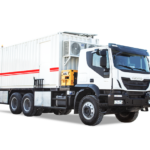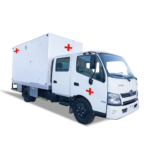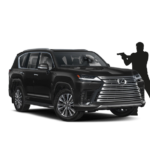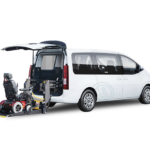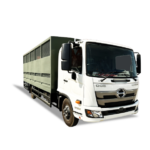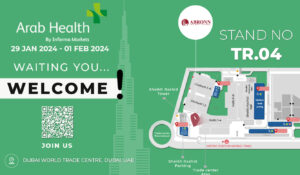In the context of ambulance and emergency vehicle manufacturers, the capabilities of ambulances and other emergency vehicles are instrumental in providing optimal treatment. This article discusses the major players in the Dubai, UAE market focusing on their specialisation, advancements and impacts in the healthcare industry.
Thank you for reading this post, don't forget to subscribe!The Importance of Quality Ambulances and Emergency Vehicles
Emergency response is a critical area where safety and reliability cannot be compromised in any way. Emergency vehicles, specifically ambulances, must endure a lot of pressure and work perfectly under stress.
Technological Advancements
Technological changes have also impacted emergency vehicles through enhanced medical technologies, navigation technology, real-time communication technology, and others to improve service delivery to patients and boost efficiency.
Customization and Conversion
This makes the software easily adaptable to the various needs of different healthcare facilities and emergency services. Quality converting solutions guarantee that vehicles meet certain requirements such as interior configurations and incorporation of medical equipment among others.
Leading Ambulance and Emergency Vehicle Manufacturers
Abronn FZE can be rated as a leading manufacturer characterised by strict workmanship and innovative conversion methods. With a focus on conversions of vehicles from popular manufacturers, such as Toyota, Chevrolet, GMC, Hyundai, Ford, and Mercedes-Benz, Abronn FZE guarantees the highest-quality and performance of its products.
Ford Motor Company:
Having been in the automobile production for many years, Ford motor company has proved itself to be a reliable supplier of emergency vehicles. Their models are characterised by durability, performance, and customization in response to the needs of emergency services.
Mercedes-Benz:
In its line of emergency vehicles, Mercedes-Benz is successfully trying to merge elegance with practicality. Prominent for their elegance and innovation in design and technology, Mercedes-Benz ambulances meet the comfort needs of the patients and medical professionals.
Chevrolet:
Chevrolet’s range of emergency vehicles is based on the principle of versatility and adaptability to any situation. Chevrolet offers an extensive package of models and conversion possibilities, so the ambulances meet the requirements of different health care workers and rescuers.
GMC:
GMC thus emphasises on the physical strength of their emergency vehicles and their ability to incorporate sophisticated medical equipment. Utilising durable and dependable materials, GMC ambulances are ready to face any emergency situation that could be thrown their way.
Spotlight on Abronn FZE
Abronn FZE company has a long history and great experience in the production of ambulances and emergency vehicles. The following are features that support the reasons that Abronn FZE is a company that offers excellent products and excellent services.
In the field of ambulance and emergency vehicle manufacturing, ABRONN FZE remains one of the industry’s leading entities. Dedicated to fulfilling its mission to change the course and improve the EMS systems,
Key Achievements and Milestones:
Since the firm’s formation, ABRONN FZE has been able to accomplish the following milestones that consolidate its operations in the industry. Not only did the company develop new conversion techniques but also has set new standards for quality and reliability. Some of these are the efficient production of different models of vehicles, adoption of new technologies, and development of quality partnerships with leading companies.
Conversion Expertise:
The process of conversion that ABRONN FZE underwent is definitely one that is defined by accurate measurements and tireless effort. Every vehicle goes through an all round change of look, according to clients’ specifications and needs. Right from the interior design to the integration of medical equipment, everything is designed in such a way that it is fully functional and performs to the best of its capabilities. With the help of unique conversion procedures, ABRONN FZE converts cars into modern mobile intensive care units and emergency vehicles capable of meeting any emergency situation effectively.
Customization Options:
Another asset of ABRONN FZE is that it is adapted for providing clients with solutions that meet their specific requirements. From the placement of medical equipment, compartments for special storage, or ergonomic design, for example, clients may customise the vehicles in relation to their needs. The team of qualified professionals at ABRonn FZE works hand in hand with the clients during the customization process to ensure each aspect of the product is implemented to perfection.
Top Brand Collaborations:
APRONN has established long-lasting business relationships with major automotive manufacturers, such as Toyota, Chevrolet, GMC, Hyundai, Ford and Mercedes Benz. These affiliations allow ABRONN FZE to have a wider selection of vehicle models and platforms to offer the best choices for the clients’ emergency vehicles. Compact ambulances to large transporters, ABRONN FZE prides in its flexibility and achievements that have been attained through partnerships with leading brands.
Quality Assurance
Quality assurance is one of the most important factors at ABRONN FZE. To maintain high quality and standard then every manufactured vehicle has been subjected to quality test to meet international standards. Also, the customer testimonials and case studies are good evidence of the company’s dedication in providing quality products and excellent service since customers trust ABRONN FZE.
Ambulance & Emergency Vehicle Manufacturing Market: Future Trends
The future trends suggest that its ambulance and emergency vehicle manufacturing will also advance and introduce more innovations.
Emerging Trends:
Electric and hybrid emergency vehicles are making a perfect move towards sustainable and efficient vehicles. These vehicles have had the ability to produce fewer emissions and less dependence on petrol thus making them more environmentally friendly products without compromising on efficiency. Furthermore, the self-driving technology is also transforming the emergency response systems, effectively allowing the vehicles to avoid traffic congestion and reach the planned locations more rapidly and accurately.
Sustainability Initiatives:
As awareness on environmental issues increases, manufacturers are adopting environmentally sustainable production process as well as environmentally friendly automobiles. In everything ranging from using recycled materials to cutting down on the utilization of resources in making the ambulances, sustainability is gradually being adopted as a key consideration in the making of ambulances. These measures not only minimize CO2 emissions but also help maintain the limited stock of resources on our planet.
Challenges and Innovations:
Nevertheless, the industry is experiencing various challenges that require innovation solutions even with these developments. Challenges include; the high costs of healthcare; world changing regulations; and the growing need of the health sector for more complex equipment among others. Though, with innovation and partnerships, these are potentials for new breakthroughs to be achieved. Future developments may include more progressive medical technologies, better design of automobiles, and better communication devices.
Therefore, when choosing an Ambulance and Emergency Vehicle Manufacturers company, healthcare providers, and emergency services should consider the following factors that will lead them to the right company.
Key Considerations:
First and foremost, the healthcare providers should consider the quality and reliability of the manufacturer. To learn more about the manufacturer’s credibility, one must consider their past performances, customer feedbacks or testimonials, and industry accreditation.
Furthermore, customization features are of paramount importance in responding to peculiar requirements of various stakers in the healthcare sector and emergency services. Companies that provide versatile solutions enable integration of particular medical equipment, work with ergonomic design and layout conditions meeting the requirement of the organization.
Another important factor is the ability to meet regional standard and legal requirements. Ambulances being patient and crew transport vehicles have to meet certain safety and performance requirements set by the regulatory authorities. It is legal and operationally important to choose a manufacturer who understands these regulations and who is willing to adhere to them.
This means that through customization ambulances are well equipped to meet the requirements of different emergencies. Therefore, specialization of vehicles is crucial to enhance patient care as well as organization and management of services.
Furthermore, it is obligatory to conform to regional standards for legal and operational purposes. Ambulances that are compliant with set standards do more than protect patients and crews; they also protect from legal ramifications and potential fines.
Future Trends:
Prospects for future evolution of ambulance production include electrification and hybridization of vehicles, automation, and environmental protection programs. Those manufacturers who will be ready to embrace these trends and incorporate them into their designs are likely to chart the future of emergency medical services.
Future Outlook:
The future of ambulance and emergency vehicle manufacturing looks promising for constant progress and development. With the advancement of technology, the manufacturing companies are looking forward to new ways to make better vehicles in terms of performance, security, and environmental impact. These innovations can supplement current emergency medical services to enhance response times and survival rates.
Final Thoughts:
In conclusion, the critical importance of these manufacturers has a deep significance in the improvement of emergency medical services and the number of saved lives across the globe. It is through their commitment to quality and creativity that they are able to support the betterment and welfare of several communities and societies across the world.
FAQs:
How much to convert an ambulance into a camper?
The cost of getting an ambulance and turning it into a camper thus depends on the size of the ambulance, the specific features one wants to include and whether one would do it alone or hire someone to do the job for him or her. It may cost anywhere from $10,000 through $50, 000 or even more upon average.
How much does it cost to convert a van into a camper?
Converting a van can range anywhere from $5,000-$30,000 or even higher depending on what type of van, what kind of options one wants, and materials and if one is attempting to DIY or hiring somebody.
What is the best type of van to convert into a camper?
It would be impossible to suggest that a specific type of van is best for conversion because it all depends on personal preference and functionality. Some of the most preferred vehicles include the Mercedes Sprinter, Ford Transit, and Dodge Promaster thanks to their spacious and versatility.
What are the requirements involved in changing a van into a camper?
Conversion equipment and material may consist of insulating material, floor, bed or bed space, storage compartments, electrical appliances with power source such as the solar panel or batteries, window or air vents, and possibly water outlets such as the sink or toilet if necessary.
Should i convert a van into a camper?
Whether converting a van to a camper is worth it can be a question that requires considering your way of life, your pocket, and the kind of travelling that you do. People who like travelling and travelling in the tents find camper van more flexible and convenient, which might be a consideration when searching for such a vehicle.
Why are campervans costly at the moment in the United Kingdom?
There are several factors that can make campervans costly in the UK, including high demand, few suppliers, additional taxes and tariffs, strict regulatory environment, and relatively high cost of importing or manufacturing top-quality vehicles with suitable accessories.
How quick could a van be changed into a camper?
The duration in converting a van to a camper depends on the process, materials used, skills involved and whether one does it personally or seek the services of experts. Most people find it takes anything between several weeks and several months.
What do you refer to as a vehicle that has been modified to accommodate sleeping and cooking?
A vehicle that is altered to become a temporary living space is known as a camper van or conversion van or simply a camper.
What is the difference between a camper and an RV?
In most cases, a camper is a small, easily transportable vehicle that can be driven and parked in a conventional manner whereas an RV stands for recreational vehicle which can include living as well as driving space.
What is a camper truck called?
Yes, vans can be converted into campers and this is a fairly mobile and adaptive solution for getting used for camping and travelling.
What is the proper name for a camper?
A camper truck is also known as a truck camper or the pickup camper, which is a recreational vehicle that can easily be installed on the back of a pickup.
What is the term for a truck that has a pop up camper on the back?
Camper truck is also known as a truck camper or a pickup camper; the camper type that can be transported in the back of a pickup truck.
Are ambulances insulated?
Answer; level of insulation of an ambulance is demonstrated to maintain comfort of patients in transit. However, the level of insulation may vary depending of whether the ambulance is the specific type for the patient or just a common one out there.
Can you use a van as a camper?
It is possible, and in fact this particular style of appliance where ambulances can be converted into campers can indeed potentially provide large space for camping and traveling.
How many people can fit in a truck camper?
Answer: Most truck campers are designed to accommodate one to three people max.









